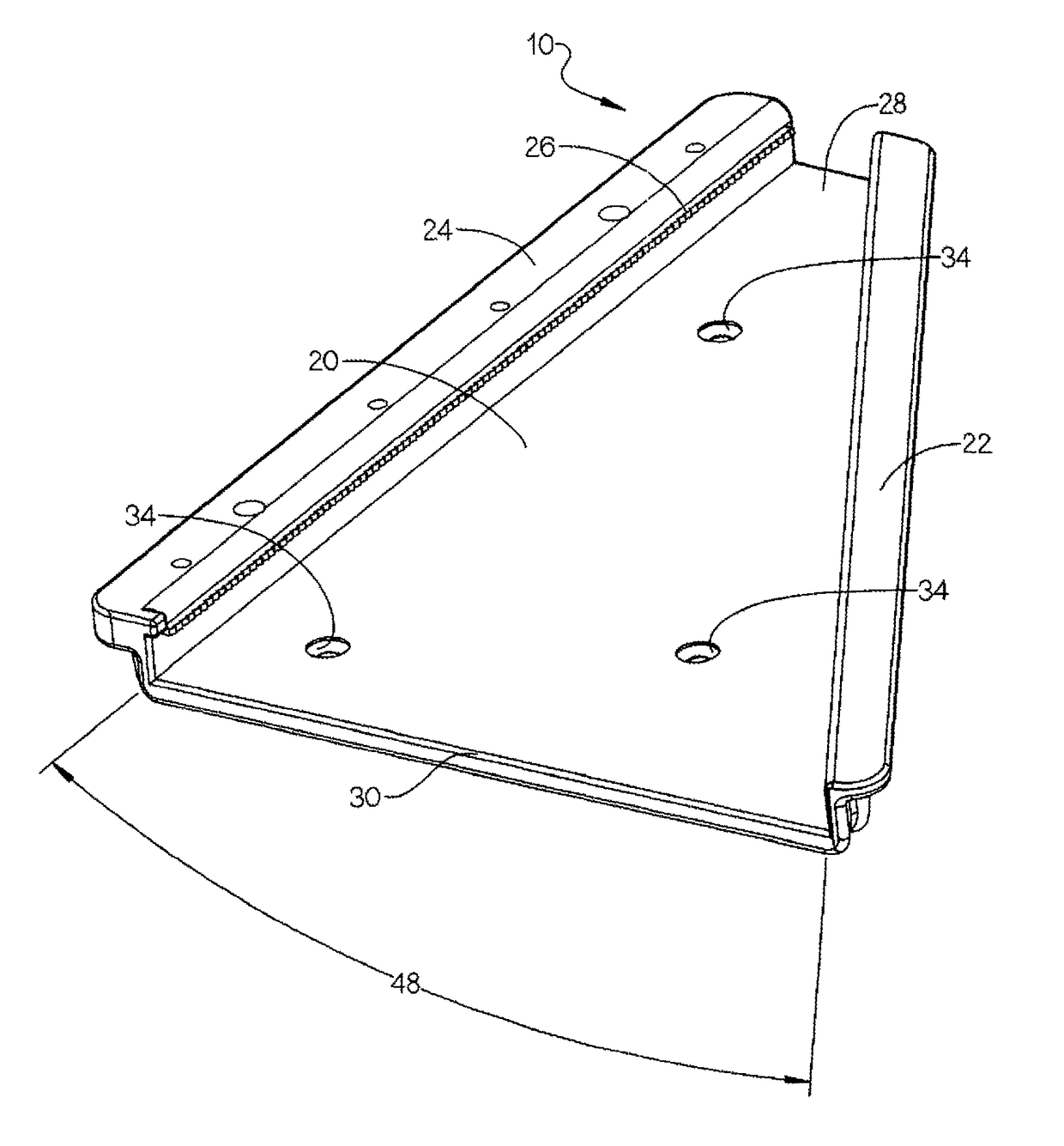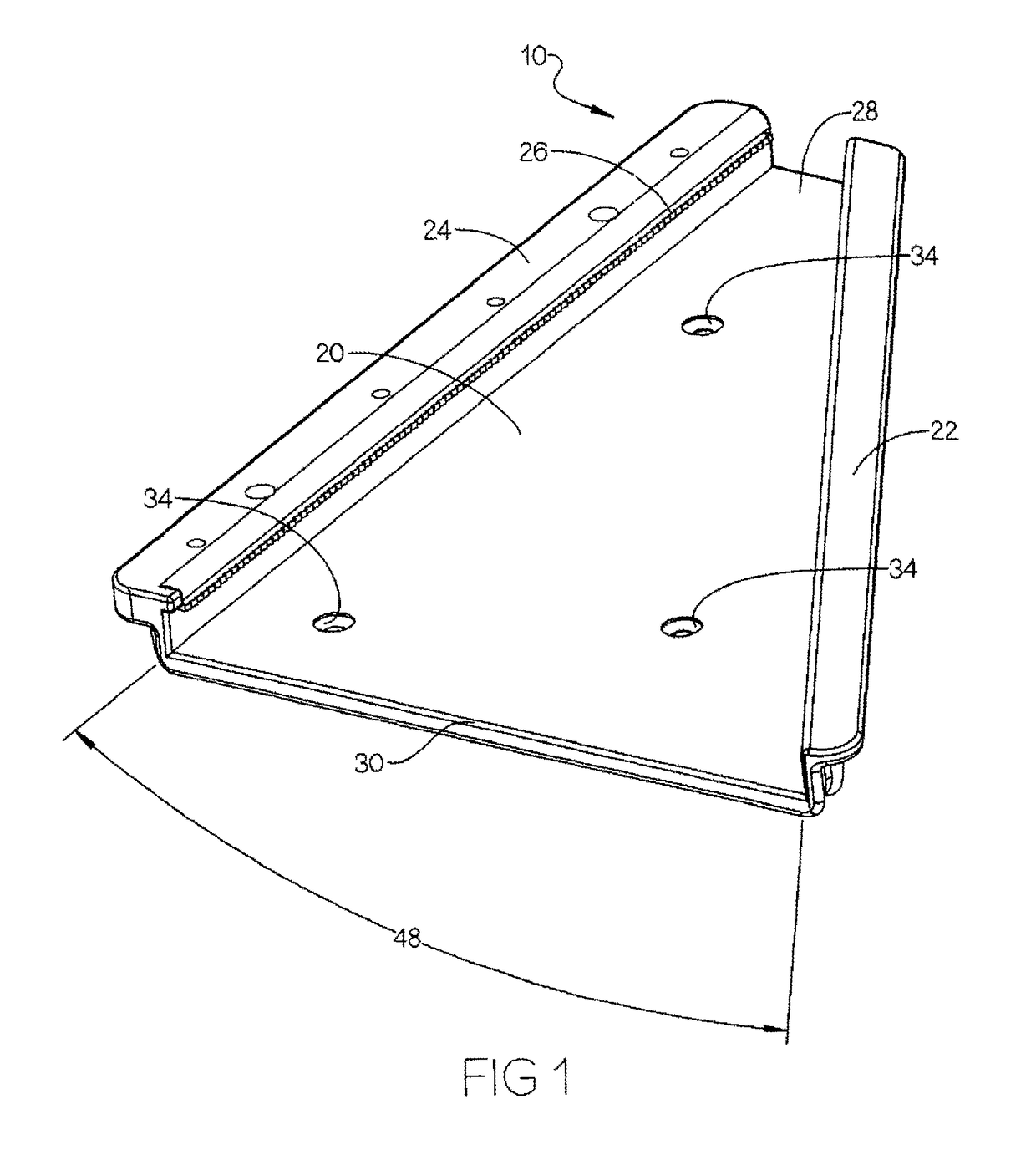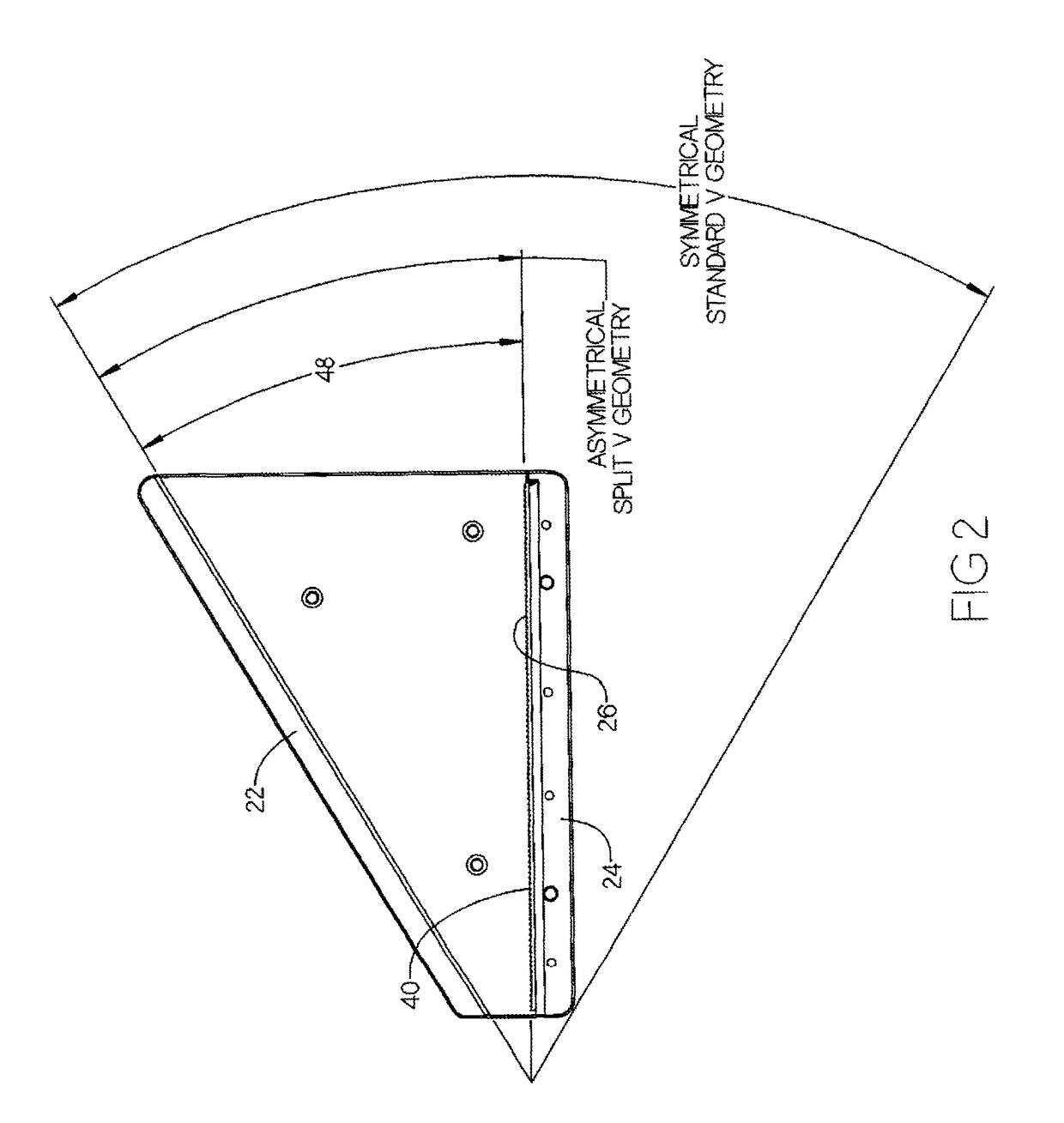Appliance for opening screw and twist type containers
- Summary
- Abstract
- Description
- Claims
- Application Information
AI Technical Summary
Benefits of technology
Problems solved by technology
Method used
Image
Examples
Embodiment Construction
[0039]The present invention provides an appliance for opening screw and twist type containers which comprises a one piece engineering thermoplastic body, having a fully asymmetrical split V type geometry, a centerline positioned gripping rail with an integrally molded, low profile, optimized metal unidirectional gripping blade, and an approximately 30 degree offset from center line loading reaction plane.
[0040]
10appliance for opening screw type 20base of appliancecontainers22offset loading ramp and reaction 24centerline positioned gripping planerail26unidirectional gripping blade28small container aft end30large container forward end32gripping blade protection stud34optional tapered screw mounting 36flow through blade retention holeport38adhesive mounting pad40 reverse angled locking teeth42blade protrusion from protection 44blade protrusion from gripping studrail46gripping blade height from base 48loading and reaction plane off of applianceset angle50side wall support gussets52mount...
PUM
 Login to View More
Login to View More Abstract
Description
Claims
Application Information
 Login to View More
Login to View More - R&D
- Intellectual Property
- Life Sciences
- Materials
- Tech Scout
- Unparalleled Data Quality
- Higher Quality Content
- 60% Fewer Hallucinations
Browse by: Latest US Patents, China's latest patents, Technical Efficacy Thesaurus, Application Domain, Technology Topic, Popular Technical Reports.
© 2025 PatSnap. All rights reserved.Legal|Privacy policy|Modern Slavery Act Transparency Statement|Sitemap|About US| Contact US: help@patsnap.com



